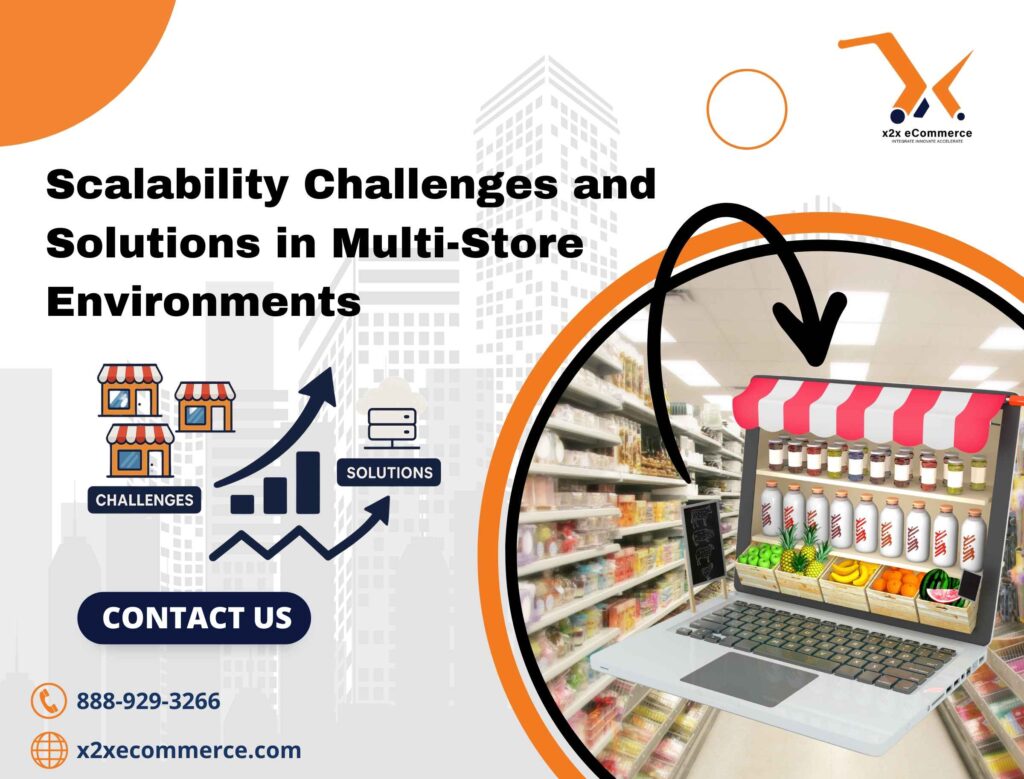
In the modern-day fast-paced retail and e-commerce age, companies growing across several stores, physical, digital, or both must contend with a new generation of intricate challenges. As you grow, your processes, systems, and operations must grow along with you. But it’s seldom a flat line.
Below is an overview of the major scalability issues in multi-store settings and the real-world solutions to overcome them.
Ubiquitous Scalability Challenges
1. Data Fragmentation
When you have every store on a separate system or database, you create data silos. You don’t have an end picture of your inventory, customers, sales, and operations.
2. Inventory Discrepancies
Inventory across stores can be a nightmare. You may overstock one store and out of stock another unless you have visibility in real-time.
3. Bottlenecks to Performance
The more users, the more stores, the more transactions your system must manage, the poorer the performance is. Response times, delays, syncing, or even crashing the system become a legitimate issue.
4. Integration Complexity
More stores usually mean more systems: ERP, POS, eCommerce websites, loyalty apps. Having them all communicate is the equivalent of monster middleware or custom APIs.
5. User Management and Access Control
Giving the right people the right access (and keeping it away from looking at what they shouldn’t) is more difficult when you’ve got more people on your team and store-specific jobs.
6. Centralized vs. Localized Control
Flipping back and forth between centralized control and local liberty is difficult. You need consistency across locations, but you’d also like to give local teams the ability to make operational decisions.
Solutions
1. Embrace a Single Platform
Think about an integrated solution such as LS Central or similar ERP-based solutions. These consolidate POS, eCommerce, inventory, and financials onto a single platform with no more data silos and enhanced visibility.
2. Inventory Management in Real-Time
Implement solutions that provide real-time synchronization of inventory balances across the entire network. This reduces guessing and enables smarter fulfillment alternatives such as ship-from-store or store-to-store transfers.
3. Cloud-Native Infrastructure
Select cloud-based options for improved scaling performance. Cloud environments can automatically scale resources based on demand peaks, ensuring everything runs smoothly during peak traffic times.
4. Strong Integration Frameworks
Employ standard APIs or connectors (e.g., for Magento, Shopify, etc.) that are pre-configured for integration with ERPs such as Business Central. Try not to over-customize where possible to minimize maintenance load.
5. Role-Based Access Control (RBAC)
Enforce fine-grained permissions to manage users by location. Solutions that have RBAC features built into them enable centralized IT to maintain control yet provide store managers with the autonomy they require.
6. Centralized Configuration with Local Overrides
Utilize systems where you can establish global rules (pricings, discounts, branding) with location-level overrides. It gives the proper balance of standardization and flexibility.
As you keep scaling, invest in automation (replenishment, price updates, etc.), analytics (centralized decision-making), and customer experience solutions (e.g., omnichannel loyalty programs).
The objective? Get every store online or offline operating as part of a seamless, smart network. Scalability is less about opening more stores; it’s about getting every store to provide more value.
Final Thoughts
Scaling up a multi-store company is not a matter of doing it all over again. You have to re-think processes, spend time in the right systems, and develop processes that are flexible but consistent. A good strategy will enable you to scale without growing pains.





